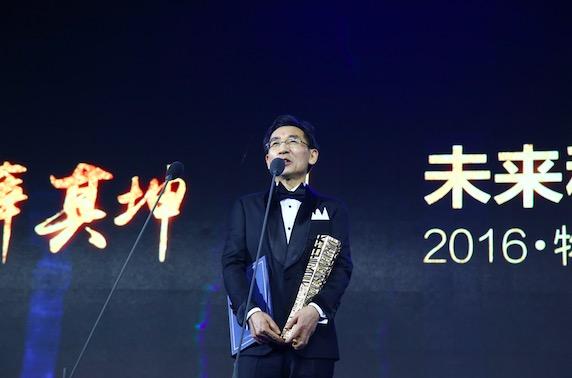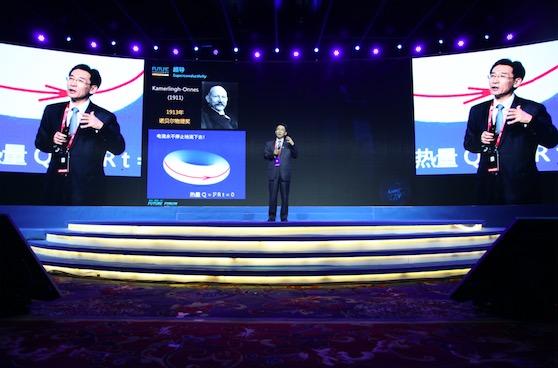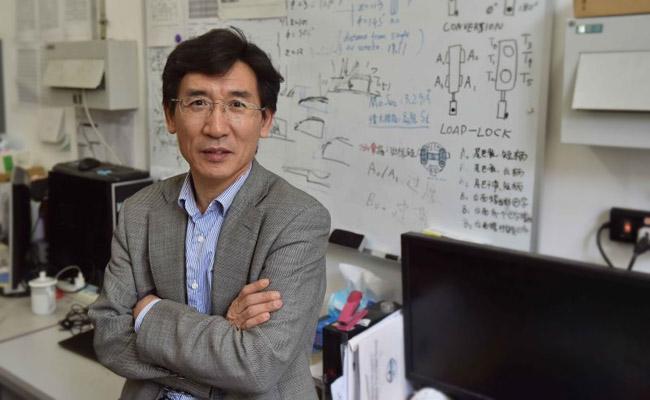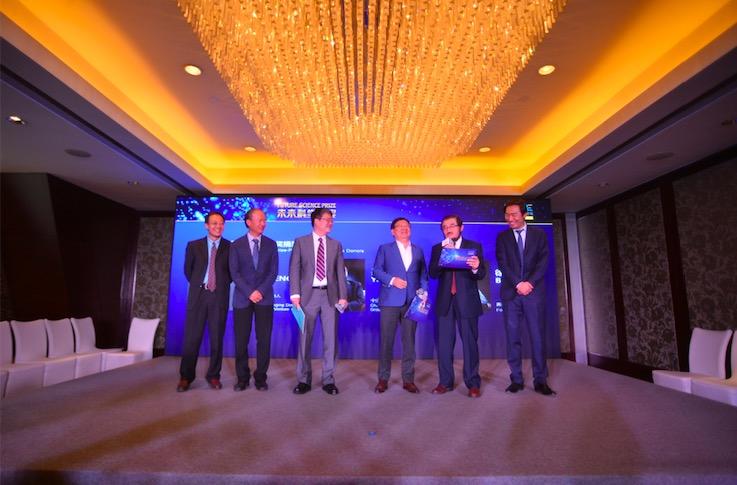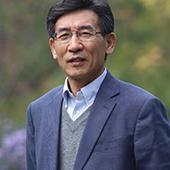
For his pioneer work in discoveries of novel quantum phenomena using molecular beam epitaxy, including quantum anomalous Hall effect and monolayer FeSe superconductivity.
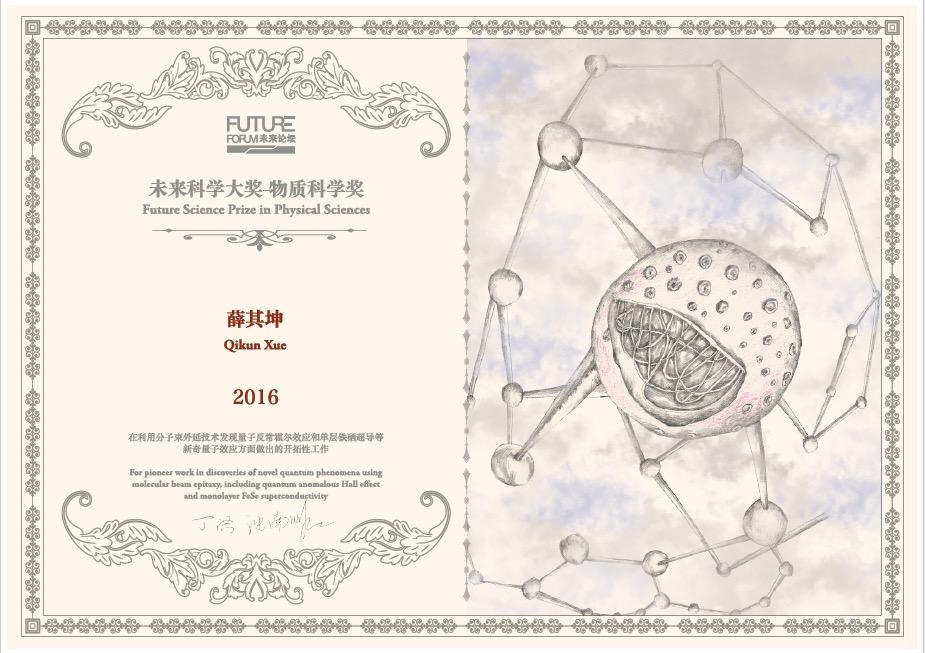
2016 The Physical Science Prize Laureate


Abstract: Qikun Xue has made groundbreaking discoveries to novel quantum phenomena by using molecule beam epitaxy (MBE), an advanced thin film growth method that allows thin film to grow layer by layer and in a crystalline form on a substrate. In particular, he and his collaborators have synthesized many kinds of high-quality crystalline thin films, enabling them to first discover quantum anomalous Hall (QAH) effect and high transition temperature superconducting monolayer FeSe on SrTiO3 substrate. Both discoveries of Xue have been confirmed by many other groups, and have stimulated further intensive research activities around the world, with the hope that critical temperatures for both QAH effect and interfacial superconductivity can be further increased, and these materials become more practically useful in the future.
Full text:
In a usual conducting material, the electron current is linearly proportional to the applied voltage, and the ratio between voltage and current is called as the electric resistance of the material, this is the well-known Ohm’s law. Ohm’s law also implies that current transport generates heat which is proportional to resistance and current square. This is how one can generate the useful heat from electricity, but this is also how the wasteful or even harmful heat is generated during transport of current, and the whole microelectronics industry is now facing a severe bottleneck of the heating problem. However, the heating problem can be completely avoid, or in a word, the Ohm’s law can spectacularly violated, in two novel quantum phenomena: superconductivity and quantum Hall effect. Partially due to their great potential for application to the human society, the understanding of these two quantum phenomena has become intensive research areas in condensed matter physics over last decades. In the meantime it has greatly enriched human knowledge, often in leaps and bounds, and sometime beyond the boundary of condensed matter physics, as evident by five Nobel Prizes to superconductivity and two Nobel Prizes to quantum Hall effect.
Qikun Xue at Tsinghua University has made groundbreaking discoveries to both the novel quantum phenomena by using molecule beam epitaxy (MBE), an advanced thin film growth method that allows thin film to grow layer by layer and in a crystalline form on a substrate. In particular, he and his collaborators have synthesized many kinds of high-quality crystalline thin films, enabling them to first discover quantum anomalous Hall effect and high transition temperature superconducting monolayer FeSe on SrTiO3 substrate.
Quantum Hall effect refers to quantization of transverse conductance (inverse resistance) in a two-dimensional electronic material in a strong perpendicular magnetic field. Another important feature of this effect is that the longitudinal resistance vanishes: electrons can move without generating heat along edges of the material. Quantum anomalous Hall (QAH) effect refers to the quantized Hall effect caused by magnetically polarized electrons which substitute the applied magnetic field. Since the simulated magnetic field caused by the magnetically polarized electrons can be one hundred time stronger that the strongest magnetic field available in a laboratory, QAH effectis regarded as one possible way to realize room-temperature quantum device the in the future. Although this effect had been highly expected, realization of the QAH effect had been a great challenge in the material preparation and in situ measurement. In December 2012, Xue and his team reported for the first time that the Hall resistance at zero magnetic field reaches the quantized value h/e2 ~ 25.8 kilo-ohm from a field-effect device made of MBE-grown thin film of chromium-doped (Bi,Sb)2Te3 topological insulator at ultralow temperature, which marks the first experimental realization of the QAH effect [1].
Superconductivity is a macroscopic quantum phenomenon of exactly zero electrical resistance and expulsion of magnetic field occurring in certain materials when cooled below a characteristic critical temperature (Tc), first discovered on mercury (Tc ~ 4K or -269C, a very low temperature) in 1911. Much higher values of Tc (>77 K or above liquid nitrogen temperature) were discovered in certain copper-oxide materials in 1986, and relatively high values of Tc (> 40 K) were also found in some FeAs-based or FeSe-based materials in 2008. In February 2012, Xue and his team reported for the first time a significantly enhanced Tc (above 40K or even possibly above 77K) on the MBE-grown monolayer FeSe on a conducting SrTiO3 substrate [2], as compared to the bulk FeSe (Tc ~ 10K). This discovery came as a complete surprise since a very thin film tends to have suppressed Tc, thus it has opened a new route for interface-enhanced superconductivity.
Both discoveries of Xue have been confirmed by many other groups, and have stimulated further intensive research activities around the world, with the hope that critical temperatures for both QAH effect and interfacial superconductivity can be further increased, and these materials become morepractically useful in the future.
[1] Cui-Zu Chang, Jinsong Zhang, Xiao Feng, Jie Shen, Zuocheng Zhang, Minghua Guo, Kang Li, Yunbo Ou, Pang Wei, Li-Li Wang, Zhong-Qing Ji, Yang Feng, Shuaihua Ji, Xi Chen, Jinfeng Jia, Xi Dai, Zhong Fang, Shou-Cheng Zhang, Ke He, Yayu Wang, Li Lu, Xu-Cun Ma, Qi-Kun Xue, Experimental Observation of the Quantum Anomalous Hall Effect in a Magnetic Topological Insulator, Science 340, 167 (2013).
[2] WANG Qing-Yan (王庆艳), LI Zhi (李志), ZHANG Wen-Hao (张文号), ZHANG Zuo-Cheng (张祚成), ZHANG Jin-Song (张金松), LI Wei (李渭), DING Hao (丁浩), OU Yun-Bo (欧云波), DENG Peng (邓鹏), CHANG Kai (常凯), WEN Jing (文竞), SONG Can-Li (宋灿立), HE Ke (何珂), JIA Jin-Feng (贾金锋), JI Shuai-Hua (季帅华), WANG Ya-Yu (王亚愚), WANG Li-Li (王立莉), CHEN Xi (陈曦), MA Xu-Cun (马旭村), XUE Qi-Kun (薛其坤), Interface Induced High-Temperature Superconductivity in Single Unit-Cell FeSe Films on SrTiO3, Chinese Physics Letters 29, 037402 (2012).
Qikun Xue, Chinese citizen. Born 1963 in Shangdong, China. Ph.D. 1994 from the Institute of Physics, Chinese Academy of Sciences. Professor at Tsinghua University.


